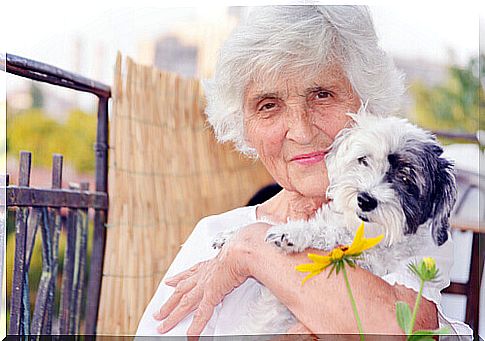Daily Life Of Co-therapist Dogs

Dog-assisted therapy interventions aim to improve patients’ physical, social, emotional and cognitive functions. The excellent results obtained have increased the use of co-therapist dogs to carry out treatments for specific pathologies.
However, even if dogs are co-therapists, employed daily in schools, hospitals, elderly care institutions or prisons, they are still pets with the desire and the need to walk, to play, to be loved. and pampered by a family.
What is the job of co-therapist dogs?
While assistance dogs live with patients 24 hours a day, helping them in various ways with their daily chores, co-therapist dogs are employed sporadically and on scheduled visits, and always accompanied by a trainer, who is generally also the owner. of the animal, and both work under the supervision of a specialist (a psychologist, a pedagogue, etc.).
In this way they contribute to:
- Improve patients’ contact with the real world, especially in the case of neuromotor disabled patients
- Decrease depression, anxiety and overcome phobias.
- Expand the communicative faculties, improving the language.
- Lower the levels of violence and reduce the sense of loneliness in prisons.
One day, like many others, for these co-therapist dogs it can take place in various places, such as:
Residences for the elderly

Co-therapist dogs are of great help in therapies aimed at patients with dementia, Alzheimer’s and hearing disorders.
Schools
Co-therapist dogs contribute to the development of cognitive skills and the improvement of motor skills. They also encourage children to read and learn as well as participate in activities regarding the care and non-cruel training of pets.
Hospitals
The main function of co-therapist dogs in this case is to distract patients so that they can forget, even for a moment, the disease or pain they are experiencing.
Private homes
Co-therapist dogs can participate in palliative care for patients with terminal illness. They are a reason for escapism and pampering, done and received, generates well-being.
Penitentiary centers and juvenile prisons
The aim is to ensure that inmates can train and care for dogs and at the same time learn a profession (such as dog grooming). It is also a good opportunity to teach minors to be responsible for a living being.
In these cases, dogs from residences or kennels are used.
It is also important to use co-therapist dogs in therapies aimed at improving the cognitive abilities of patients suffering from:
- Problems of a motor nature
- Pervasive developmental disorders
- Deficit in the development of intellectual functions
- Cerebral paralysis
- Autism
Lately , co-therapist dogs are also helping children and adolescents cope with the stress of interrogation in trials.
Like? The children first learn to speak in the presence of the co-therapist dog so that, when the time has come to enter the courtroom, they will feel safer thanks to the presence of the animal which gives them psychological support and tranquility.
Requirements for co-therapist dogs

Not all dogs have the skills necessary to become co-therapist dogs. For this reason , animals are carefully studied to rule out pathologies and zoonoses and behavioral disorders such as fears and aggression.
It is best to use animals that coexist with a family and not animals from kennels, with the exception of the cases mentioned above.
Future co-therapist dogs first receive basic obedience training, but they must also meet these requirements and be:
- Very sociable and docile.
- Eager to help people.
- Tolerant, generous and willing.
- Intelligent and able to learn easily.
- Reliable, calm and predictable.
Subsequently, in the specific preparation phase, through positive reinforcement and daily work, the co-therapist dogs improve their capacity of resistance to all stimuli coming from the outside world in order not to be altered in case of sudden noises, unstable floors or strong smells. , such as those of hospitals.
Then the animals are involved and exposed to particular situations to study their reaction and to evaluate in what type of therapy they can be used.
A priori each breed can be used in assisted therapy interventions, the most requested are however the Golden and the Labrador. It is better not to use large dogs as they could frighten patients, and not even those with a lot of hair to avoid the onset of allergic reactions.
Animals that have had their ears and tails amputated can also be intimidating to people due to their aggressive appearance. Obviously, dogs with hypersalivation are also discarded as they can be unhygienic.
Beyond the benefits of treatments and therapies assisted by dogs and outside the medical field, those who are lucky enough to have a dog as a friend are aware of the benefits that the animal brings. It really needs to be said: the dog is man’s best friend.









